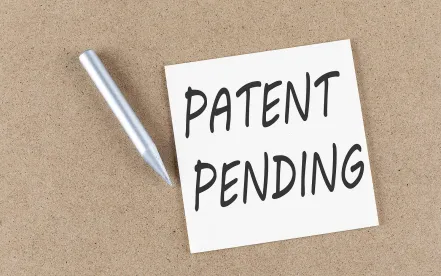This case addresses requirements to correct inventorship of a patent.
Background
Blue Gentian is an assignee of Berardi’s six patents involving a collapsible hose, where Berardi is the named inventor. Three months before filing the applications for the six patents, Ragner held a meeting to seek investors, which included Berardi. During the meeting, Ragner showed documents detailing the manufacturing process of a collapsible hose and demonstrated a prototype of the hose. The prototype hose included a wire spring to force the hose to a retracted state, about which Berardi asked whether the spring can be replaced with elastic and Ragner responded that his first two prototypes used elastic. Within hours after the meeting, Berardi built his own prototype and three months later filed a patent application, which was granted as one of the six patents. The other five patents involve subject matter related to the first patent. Tristar counterclaimed to correct the inventorship of the six patents. The district court ordered correction of the inventorship for the six patents holding that Ragner should have been a named co-inventor for all of the asserted patents. Blue Gentian appealed, alleging error in the district court’s determination that:
Ragner sufficiently contributed to conception;
there was sufficient evidence of corroboration of Ragner’s testimony; and
there was sufficient evidence of collaboration between Ragner and Berardi.
Issue(s)
Did the district court commit error by ordering correction of inventorship?
Holding(s)
The district court did not commit error in ordering correction of inventorship.
Reasoning
Regarding the first alleged error, Blue Gentian argued a proper contribution analysis requires claim construction before finding contribution and contributed elements must be sufficiently tied to specific claims.
The Federal Circuit held that since the district court resolved the questions about claim scope raised in the patent, it was under no obligation to address other potential ambiguities, i.e., courts are not required to “prospectively address hypothetical claim-construction disputes.”
Regarding Blue Gentian’s argument about the sufficiency of ties between contributed elements and claims, the Federal Circuit highlighted it was undisputed that each of the asserted patents includes one or more claims that require Ragner’s design elements that distinguished the claims from prior art. The Federal Circuit held that slight differences in appearance from the disclosed design elements do not amount to a new and separate design conception and therefore these elements were sufficiently tied to the claims. Accordingly, the district court did not commit error by holding that Ragner contributed his design elements to each one of the asserted patents.
Blue Gentian argued that Ragner’s contributions were not the same claimed elements, the contributed elements were already present in prior art, and the contributed elements were already conceived by Berardi before the meeting. The Federal Circuit found Blue Gentian overly narrowed the scope of analysis. The Federal Circuit elaborated that the proper scope in deciding contribution considers the elements in combination. The Federal Circuit also held that what matters is the significance of the overall contribution, not the significance of individual elements standing alone. Furthermore, Blue Gentian did not present evidence of Berardi’s prior conception. Accordingly, the Federal Circuit held the district court did not commit error in finding that Ragner had sufficiently contributed to the claims.
Regarding the second error, the Federal Circuit held Tristar’s evidence was sufficiently corroborated by both physical and circumstantial evidence. The district court correctly considered evidence as a whole and drew reasonable inferences from the circumstantial evidence.
Finally, regarding the third error, the district court correctly found that there was sufficient collaboration between Berardi and Ragner based on the information that was exchanged at the meeting. It is insignificant that Berardi ultimately designed an alternative design based on the information exchanged during the investment procurement meeting. It is also insignificant that Ragner did not conceive the entire invention or have the intent to make the invention before he started collaborating. Accordingly, the district court did not commit error by ordering correction of the inventorship to add Ragner as a co-inventor.



 />i
/>i

